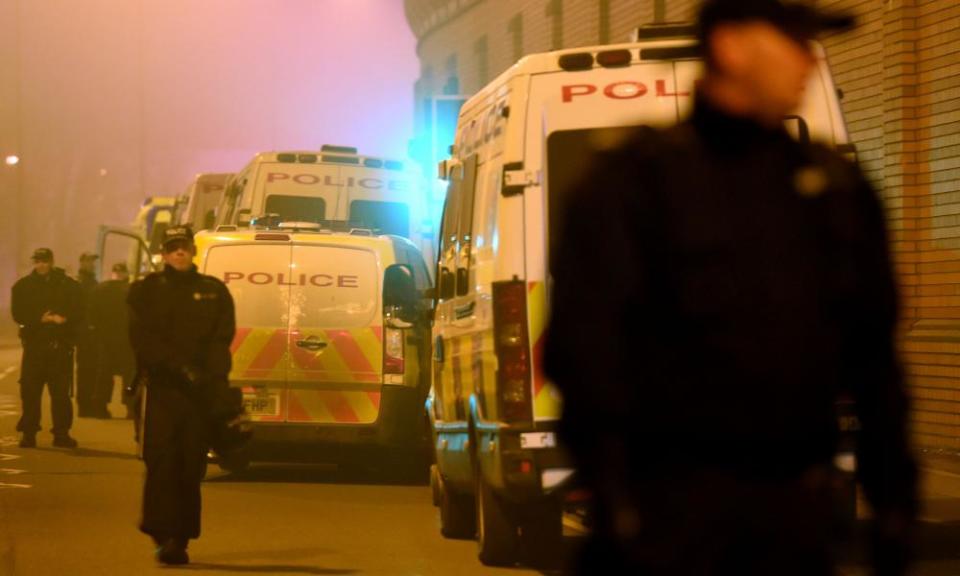I entered the prison system 60 years ago. It’s never been so chaotic and dangerous | Eric Allison
I have been a student of the prison system since I first entered it in 1957. I was around when a bread and water diet was part of the punishment process, and even had a taste of it. And I lived through major prison riots in Parkhurst, Hull and Strangeways, circa 1990.
Following the Woolf Report that followed the Strangeways riot a year later, a Guardian leader spoke of the “mandarins who condoned and defended a prison system that in all practical ways is an affront to our definition of civilisation.” Pre-riot, I spent years in the conditions that leader attacked, then served more time in the better environment that report brought about.
But I say, hand on heart, I have never seen the system in such a chaotic and dangerous state as it is now. Where to begin in chronicling the deep malaise? Soaring death rates, from homicidal, self-inflicted and natural causes; violence levels at an all-time high; prisons awash with drugs; and overcrowding and understaffing the norm in many jails.
Perhaps most depressing is the situation for the children and young people currently locked up. In July, the chief inspector of prisons, Peter Clarke, warned that no young offender institution, or privately run secure training centre was safe to hold children.
Clarke spoke of “boys locked up for excessive amounts of time and not getting enough exercise, education or training.” A guarantee of future bloated prison populations.
On adult jails, Clarke said he had seen prisoners self-segregating to avoid violence, filthy shower and lavatory facilities and vermin and insect infestations.
And the mandarins of today cannot have been unaware of the mess before Clarke’s warning. I cannot remember the last positive prison inspection report – and the last 18 months have seen riots at Birmingham, Swaleside and The Mount and Erlestoke prisons.

For me, the worst aspect of the penal mess is that I can see no sign, or even hope of change. It is as if those who run the system are so stuck in the mire they are unable, or unwilling, to navigate a way out. Take their dogmatic devotion to privatisation: two years ago, former justice secretary Chris Grayling handed the responsibility for supervising the majority of released prisoners to the newly formed, private community rehabilitation companies (CRCs). In June, a report on a vital aspect of their work was published. This joint exercise by the prisons and probation inspectorates chiefs examined the delivery of the Through the Gates post-release resettlement programme run by the 21 CRCs.
In a nutshell, they found the services provided by the CRCs were so bad that “if they were removed tomorrow, the impact on the resettlement of prisoners would be negligible”. In other words, the CRCs might as well not be there.
Could there be a more damning signpost of failure? Surely it would trigger sanctions against the CRCs, or even calls for them to be scrapped and the supervision of released prisoners to be handed back to the probation service?
Instead, last month, we learned that the Ministry of Justice had provided the CRCs with £22m of what it called “additional investment” because the CRCs were operating in “extremely challenging” circumstances. In other words, the failing CRCs were bailed out, just as the failing banks were bailed out.
I said I could see no hope of change. Before the last election, the government promised to launch a new prison and courts bill in the Queen’s speech, promising sweeping reforms. Post-election, it was dropped without explanation.
Instead, we had an open letter from the new justice secretary, David Lidington, making vague commitments to “effective rehabilitation”, without any guidance as to how he intended to achieve the same, apart from promising a much-needed influx of prison staff. Oh – and a commitment to 10,000 more prison places. Clearly, the sensible thing to do with a failing, bloated prison system is to lock more people into it.
It makes you want to weep.

 Yahoo News
Yahoo News 
